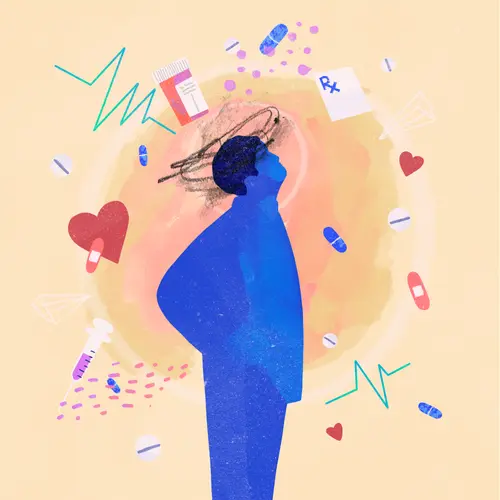Lipodystrophy is a problem with the way your body makes, uses, and stores fat. It's also called fat redistribution.
While it used to be more common with older antiretroviral (ART) treatments for HIV, better control of HIV and newer antiretroviral drugs make the development of lipodystrophy. less likely.
Symptoms
There are two types of lipodystrophy: fat loss and fat buildup.
Men tend to lose fat. This is called lipoatrophy and usually happens in your:
- Arms and legs, and veins tend to show up more
- Face, causing sunken cheeks, temples, or eyes
- Buttocks
Women tend to build up fat. This is called lipohypertrophy, lipoaccumulation, or hyperadiposity. It commonly happens in the:
- Belly and abdomen
- Breasts (It can happen to men, too.)
- Back of your neck and shoulders, sometimes called a "buffalo hump"
You could also get fatty growths, called lipomas, in other parts of your body.
Causes
Older kinds of drugs to treat HIV like stavudine (d4T, Zerit), zidovudine (AZT, Retrovir), and some of the older protease inhibitors, like indinavir (Crixivan) have been linked to lipodystrophy. The longer you have taken them, the greater your risk seems to be. However, newer HIV drugs, including newer protease inhibitors like darunavir (Prezista) seem less likely to cause it.
But HIV itself may interfere with the way your body processes fat. Your chances of experiencing lipodystrophy go up when HIV is more severe and you've had it for a long time.
You're more likely to have lipodystrophy if you're:
- Older
- White
- Obese or have had significant weight changes
Fat loss might also be from AIDS wasting syndrome.
Getting a Diagnosis
A physical exam may be enough. Your doctor will probably measure around your arms, thighs, waist, hips, and neck to set a baseline then compare those numbers with future measurements.
It's common to have other metabolic problems along with lipodystrophy, including high cholesterol and insulin resistance. Insulin resistance can lead to diabetes. These disorders can also make other problems, such as heart disease, more likely.
So your doctor will want to check your blood pressure and will also want you to get blood tests to check your:
- Cholesterol levels, both LDL (bad) and HDL (good)
- Triglyceride levels (a kind of blood fat)
- Blood sugar level
Treatment
Don't stop taking your HIV medications. Although they aren't likely to be the problem, your doctor may want to change your drug combination.The newer HIV drugs, like integrase strand inhibitors (INSTI’s) are less likely to cause lipodystrophy.
Exercising and choosing healthy foods may help you build muscle and reduce fat buildup. Exercise can also improve how your body uses insulin. Both cardio (aerobic) exercise and resistance or weight-training exercises can build your strength and heart health. And both help cut down on abdominal fat. Don't try to lose weight quickly.
You may need medicine specifically for lipodystrophy or disorders related to the condition, including:
- Tesamorelin (Egrifta), a daily shot that can lessen belly fat but may raise your blood sugar
- Metformin (Glucophage) for high blood sugar and insulin resistance
- Atorvastatin (Atorvaliq, Lipitor) or rosuvastatin (Crestor) for high cholesterol
Other options may include:
- Hormone treatments, such as testosterone and human growth hormone
- Cosmetic implants
- Injections to build up skin thickness and fill out sunken cheeks (Radiesse, Sculptra)
- Surgery to remove fat deposits

